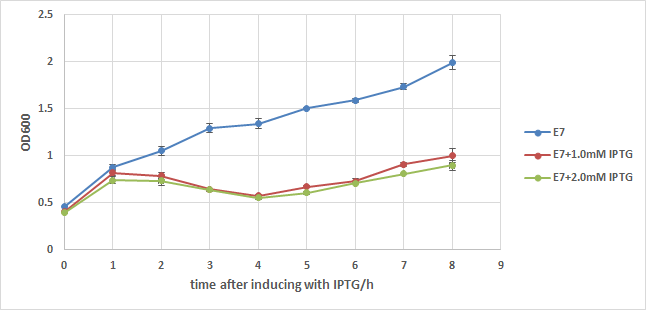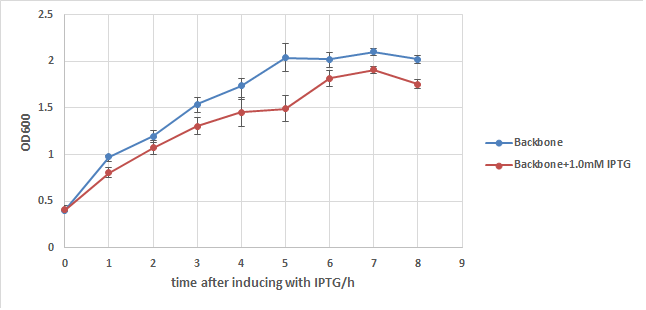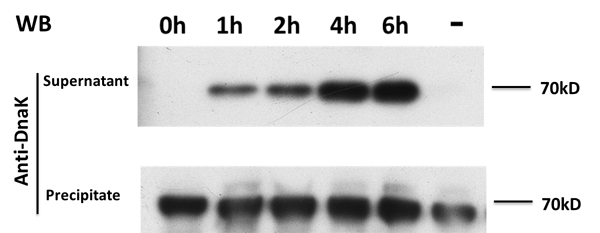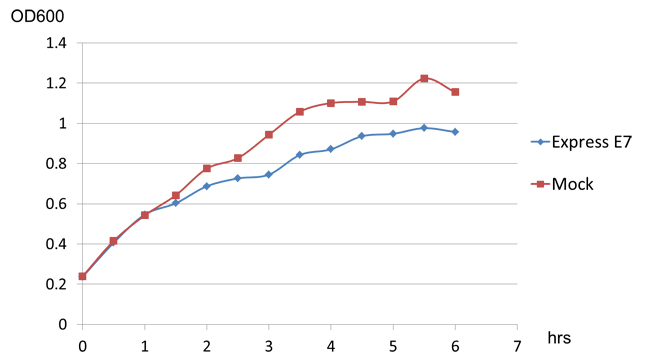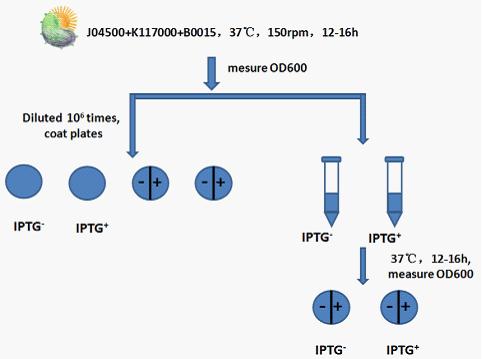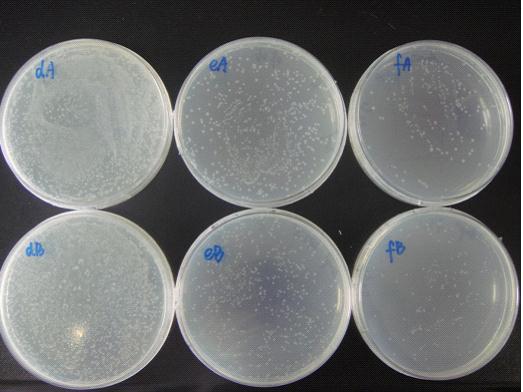Difference between revisions of "Part:BBa K117000:Experience"
(→New Using Experience From iGEM2014 WHU-China) |
(→Applications of BBa_K117000) |
||
| Line 30: | Line 30: | ||
This result indicates that E7 lysis protein may also have function in noncolicin-secreted strain of E.coli, but it remains to be explained what's the mechanism of E7 lysis protein and what causes the different effect E7 lysis have on colicin-secreted and noncolicin-secreted E.coli strain. | This result indicates that E7 lysis protein may also have function in noncolicin-secreted strain of E.coli, but it remains to be explained what's the mechanism of E7 lysis protein and what causes the different effect E7 lysis have on colicin-secreted and noncolicin-secreted E.coli strain. | ||
| + | |||
| + | |||
| + | |||
===Applications of BBa_K117000=== | ===Applications of BBa_K117000=== | ||
| Line 39: | Line 42: | ||
For more detail description of our the Lysis part was used by the NTU@iGEM team, please visit: [http://2008.igem.org/Team:NTU-Singapore NTU@iGEM Team Main Page]. | For more detail description of our the Lysis part was used by the NTU@iGEM team, please visit: [http://2008.igem.org/Team:NTU-Singapore NTU@iGEM Team Main Page]. | ||
| − | |||
| − | |||
== Using experience 2 == | == Using experience 2 == | ||
Revision as of 21:11, 17 October 2014
This experience page is provided so that any user may enter their experience using this part.
Please enter
how you used this part and how it worked out.
New Using Experience From iGEM2014 WHU-China
In order to add this lysis part to our design so that our target protein can be secreted to the extracelluar space, we design a series of experiments to prove the function of E7 lysis protein.
We first add a strong rbs(B0034) to this part, then integrate it to a commercialized plasmid named pUHE21, which has an IPTG inducible promoter. Next, we transform it into a strain of E.coli named w3110, which can synthesize and secret colicin to kill other type of E.coli. We also build up a negative control composed of w3110 and pUHE21 backbone. Those so called "E7 strain" and "BB(backbone) strain" are then induced with 1.0mM of IPTG at OD=0.5 after recovery. Samples are taken every hour for 8 hours and their OD are measured. The result is showed in the two charts below:
From chart1 we can see the obvious difference between induced and noninduced E7 strain 2 hours after induction, and the difference reaches about 1 fold 8 hours after induction, indicating that a large number of E.coli lyse because of the induction of E7.
In order to exclude the possibility that IPTG itself may cause drop in the growth rate of E.coli, BB strain is used to conduct another experiment. From chart2 we can see that IPTG does have some influence to the growth of E.coli, but its effect is too weak to cause such a big OD difference in chart1. Thus it's safe to say that the expression of E7 is the main cause of w3110's lysis, but it can't kill all of E.coli even under such a strong expression.
On the other hand, in order to prove that our target protein can be secret to the outside of E.coli with the help of E7, Samples are also taken every 2 hours from those groups discribed above, and after centrifugation, the supernatant and sediment are collected separately and western blot is adopted to detect a kind of endogenous protein called DnaK, which expresses itself constently in normal E.coli. The result is showed in the picture below:
From the picture we get to know that normally DnaK can't be secreted to the outside of E.coli after expression, but when E7 is expressed, E.coli lyses and DnaK leaks to the extracellular space and thus can be detected in the supernatant, and its concentration increases over time, proving the function of E7 lysis protein.
Besides those two main experiment to prove the funtion of E7 lysis protein, we also have an interesting discovery. When we transform E7 lysis gene into BL21, which can't secret colicin, we find that E7 lysis protein can still cause partially lysis in it, though the influence is not as strong as in w3110(the OD difference reaches about 0.5 after 10 hours of induction, see chart3 below).
This result indicates that E7 lysis protein may also have function in noncolicin-secreted strain of E.coli, but it remains to be explained what's the mechanism of E7 lysis protein and what causes the different effect E7 lysis have on colicin-secreted and noncolicin-secreted E.coli strain.
Applications of BBa_K117000
This Biobrick part is a Lysis gene. It can be ligated to the desired choice of promoter and lysis of the E coli cells could be acheieved.
The NTU@iGEM did just that, and ligated this biobrick part to the pLsrA promoter which detect AI2, an auto-inducer molecule. After the pLsrA detects the AI2, the promoter promotes the transcripton of the lysis gene. Next translation takes place and the lysis protein is formed.
Lysis protein would lyse the cell by the destruction of the cell membrane.
For more detail description of our the Lysis part was used by the NTU@iGEM team, please visit: [http://2008.igem.org/Team:NTU-Singapore NTU@iGEM Team Main Page].
Using experience 2
we seu_a used and improved this part,details are as follow:
This part we use R0010 promoter ,it is to say in the absence of LacI protein and CAP protein, it promotes transcription,in the presence of LacI protein and CAP protein, it inhibits transcription. When induced by IPTG, the protein expression begin.
Experimental procedure:
Step 1: Recovery J04500+K117000+B0015,shaking it in 37℃ for 12 to 16h at 150rpm.
Step 2: Measure the OD600 of bacterial liquid.
Step 3: Use 50ul bacterial liquid which has been diluted times to coat plates.Set IPTG(none or 1mM) control.
Step 4: Add 5ul bacterial liquid which has been diluted times to 5ml liquid Luria-Bertani medium. Set IPTG(none or 1mM) control. After cultivate in 37℃ shaking(150rmp) for 12 to 16h,measure the OD600 of bacterial liquid .
Step 5: Use 50ul bacterial liquid(from step 4) which has been diluted times to coat plates. Set IPTG(none or 1mM) control.
Step 6: Compare bacterial liquid concentration and petri dishes on the growth of the colony to judge lethal gene’s effects .Compare the bacterial concentration and Petri dish colony growth to judge the effect of lethal gene. Judging from the OD600 of bacterial liquid and the growth state of bacteria in Petri dish to see whether the death gene work or not.
(Notes: d/e/f means the bacterial liquid were diluted 104/105/106times,A/B means the concentration of IPTG none/1mM )
The growth state of bacteria in Petri dish:
The comparation of colony growth:
We can see from the figure that the bacteria caring the death gene is in bad condition comprared to the one without . We conclude that the death genes work.
For more information on how this part operates in our system, please visit [http://2012.igem.org/Team:SEU_A SEU_a Team Main Page].
User Reviews
UNIQ24f8f7afc43f1dd0-partinfo-00000000-QINU UNIQ24f8f7afc43f1dd0-partinfo-00000001-QINU

